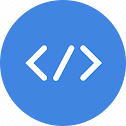HTML Tags (III)

HTML Tags (III) X. Semantic Tags HTML5 introduced a set of semantic tags that help developers better structure their web pages for improved search engine optimization (SEO), accessibility, and readability. Semantic tags describe the purpose of the content, making it easier for search engines and screen readers to understand the structure of the page. Here are some commonly used semantic tags: <header> Tag: The <header> tag is used to define a header section of a web page or section. This tag is used to add a logo, navigation menu, or any other introductory content at the top of a web page. It helps search engines to understand the purpose of the header section. <nav> Tag: The <nav> tag is used to define a set of navigation links. This tag is used to group navigation links in one place. It helps search engines to understand the purpose of the navigation links on the web page. <main> Tag: The <main> tag is used to define the main content of a web page ...


